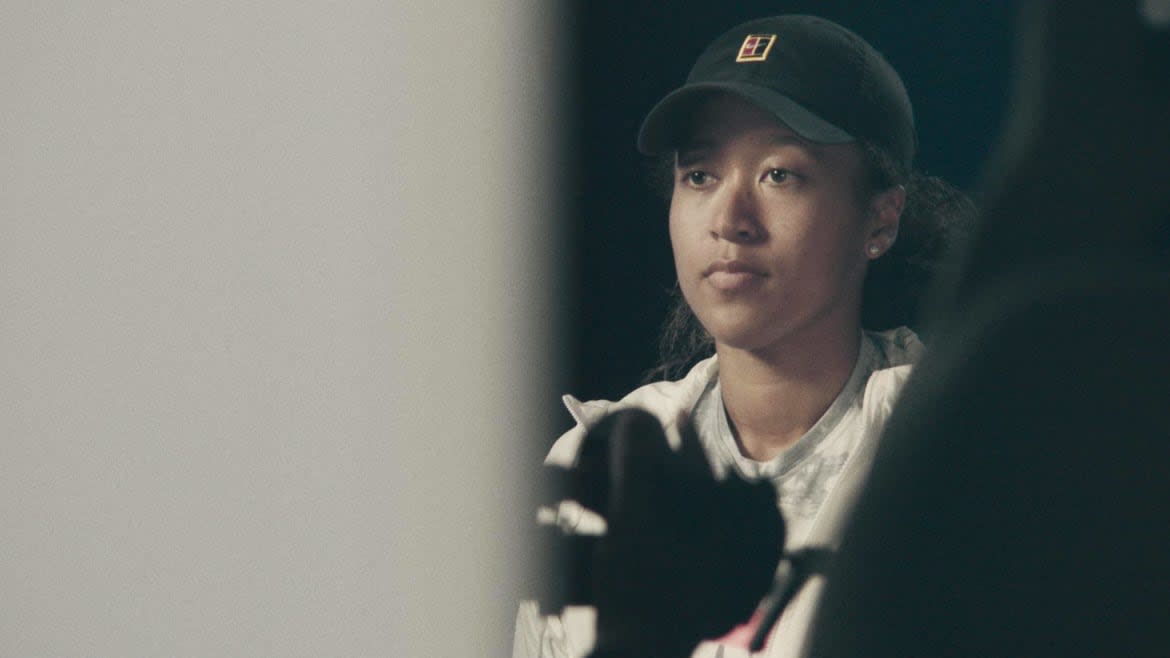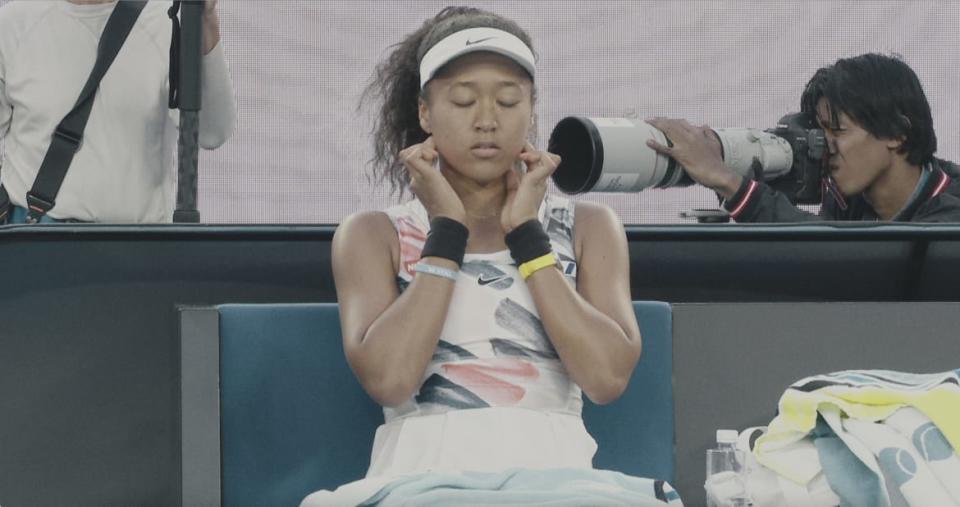The Many Faces of Naomi Osaka

- Oops!Something went wrong.Please try again later.
- Oops!Something went wrong.Please try again later.
- Oops!Something went wrong.Please try again later.
- Oops!Something went wrong.Please try again later.
“Sometimes I feel like I’m a vessel.”
This revelation opens Naomi Osaka’s self-titled Netflix docuseries, premiering on July 16, as we see footage of her and her younger sister Mari as precocious children doing warm-ups on a tennis court. Since the age of 3, when the inexperienced Leonard Francois decided that he was going to follow a blueprint set by Richard Williams more than a decade earlier and train his two daughters to become tennis champions, Osaka has embodied the hopes, expectations and labor of her immigrant parents. When she began playing competitively for her home country of Japan as a person of mixed Haitian-Japanese heritage, she also represented a progressive, multicultural future to her transnational horde of onlookers. But who is Osaka beyond a political symbol and product of hard work?
This question runs through the three-part documentary, directed by Academy Award-nominated filmmaker Garrett Bradley (Time) and co-produced by LeBron James, that reminds viewers that, above all, the 23-year-old athlete is a young woman still in progress.
Sha’Carri Richardson Deserves So Much Better Than This Bullsh*t
A refreshingly quiet and intimate sports documentary, Naomi Osaka peels back the developing layers of the cultural phenomenon who became a household name in the United States after beating her idol Serena Williams at the 2018 U.S. Open. Noticeably, the theatrics of that event—a heated confrontation between Williams and an umpire that unfortunately garnered more attention than Osaka’s first Grand Slam title—are omitted from part one’s retelling of this moment, even though the discomfort on Osaka’s face, who broke down in tears amid the crowd’s booing, is highlighted in a close-up as she holds the championship trophy. It’s an if-you-know-you-know editorial choice that repositions Osaka as the protagonist of that moment while making viewers consider the cluster of emotions she must have been experiencing on a global stage.
The moment feels even more crushing knowing what we currently know about Osaka’s mental health struggles, which she was forced to defend after skipping a French Open press conference and subsequently withdrawing from the tournament in May. (Later, her team announced that she would not be playing in this month’s Wimbledon tournament). The $15,000 fine she received from Roland Garros elicited support from fellow athletes while others lionized her as an advocate for mental health and a firebrand against the sport’s professional protocol—titles Osaka most likely did not intend to take on when she made that very personal decision.
Likewise, it’s refreshing that Bradley’s documentary resists presenting Osaka as an inherently triumphant and bold figure. While Osaka’s ability, work ethic and tournament wins are certainly on display throughout the series, the filmmaker puts a sharp focus on the ambiguity of being young, anxious and navigating new adulthood. It helps that the soft-spoken athlete is frank about the regrets and insecurities that come with accomplishing so much at such a young age, even if she’s concise. Chief of these is that she hasn’t formed an identity outside of tennis and that she’s based her self-worth in winning.
“To anyone that would know, they know me for being a tennis player,” she says in a voiceover at the end of episode one. “So, like, what am I if I’m not a good tennis player?”
Matching the quiet tone of the introverted tennis star, the documentary isn’t overstuffed with information or commentary. The selection of interviews is narrowed down to her inner circle of family, coaches and agent—save for a few of her supporters waiting for a tournament to begin. There are no tennis historians or pop culture experts to fill silent moments or provide context for Osaka’s accomplishments. Rather, Bradley allows her camera, frequently set on a slow zoom, to capture her subject in the most mundane and uneventful moments a global superstar can have—getting her hair braided, watching sports coverage, receiving pep talks from team members, having banter with her masseuse.
Bradley, whose last feature Time was a curation of pre-recorded film captured by prison abolitionist Fox Rich, extends her collaborative manner of storytelling to Osaka who provides self-recorded footage in which she appears the least reserved throughout the series. In one of these video diaries, she reacts to the death of her mentor Kobe Bryant who died unexpectedly in a helicopter crash during the time of production, lamenting a text message she wanted to send to the basketball player seeking counsel amid her recent losses. Osaka’s mother Tamaki and her agent Stuart Duguid discuss the emotional effect Bryant’s death had on her and the long period of time they had to let her grieve from a distance.

Bryant’s presence as a chief source of inspiration and guidance for Osaka in the series, as he shows up several times, is both surprising and unsurprising. Bryant built a reputation of supporting female athletes later in his career. Likewise, his death sent shockwaves through all corners of the sports world. But it’s interesting that the Williams sisters go largely unmentioned (aside from seeing Serena in the U.S. Open) considering that Francois notably found a path to pro tennis through that family. Maybe a more educational documentary would’ve referenced them along with other tennis players of color. But there’s a generosity in Bradley allowing Osaka space from these legends, who she’ll most likely be compared to for the rest of her life, when framing her as an extension of the Williams’ legacy would be an obvious choice for less conscious filmmakers.
Overall, the juxtaposition of Osaka’s uncertainty as a developing person and international figure and the dominance she exudes on the court make all three installments deeply engaging and incredibly human. Despite the level of inspiration Osaka provides to people around the world, young and old, this docuseries is an urgent memo to fans that she’s still figuring things out.
Get our top stories in your inbox every day. Sign up now!
Daily Beast Membership: Beast Inside goes deeper on the stories that matter to you. Learn more.

